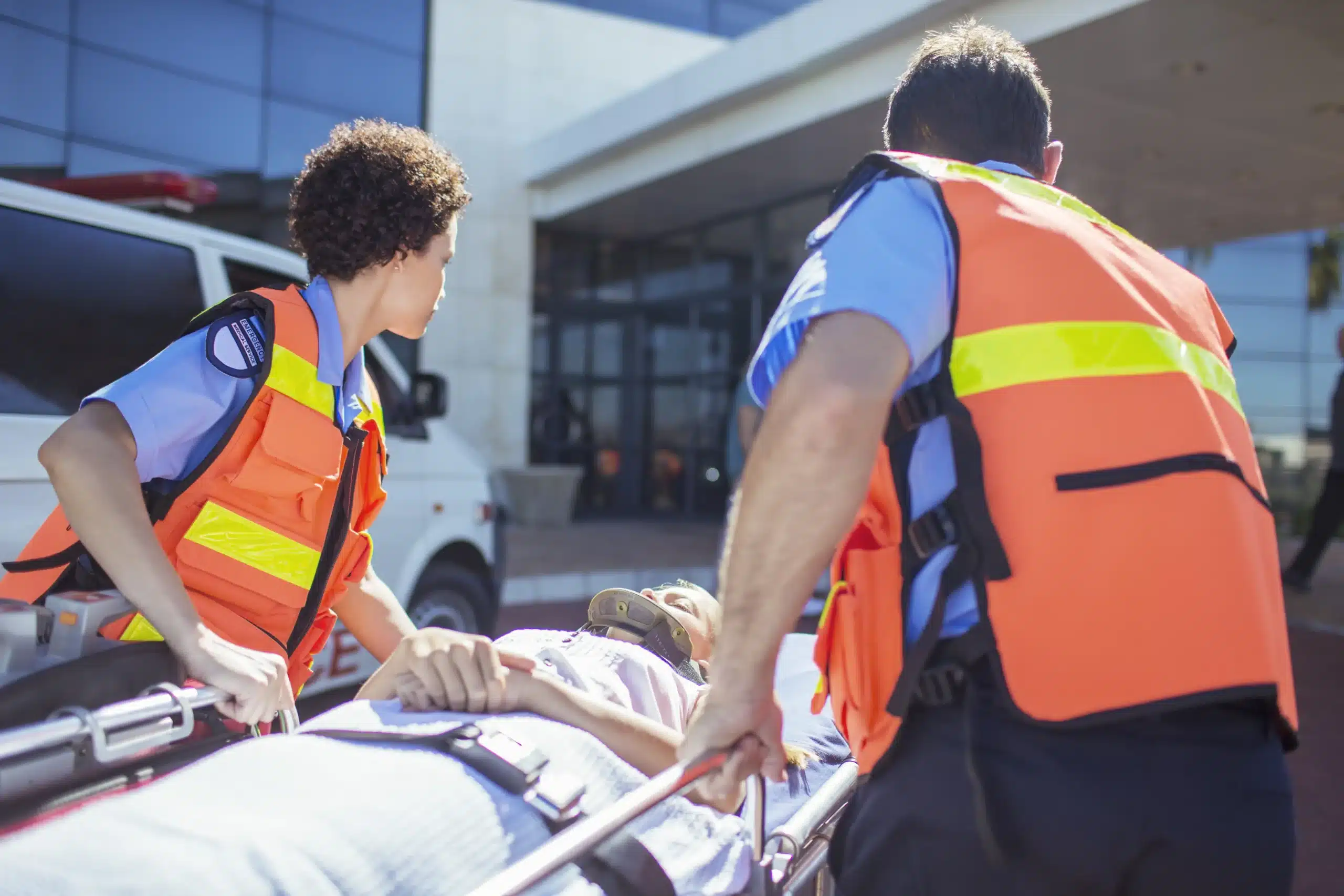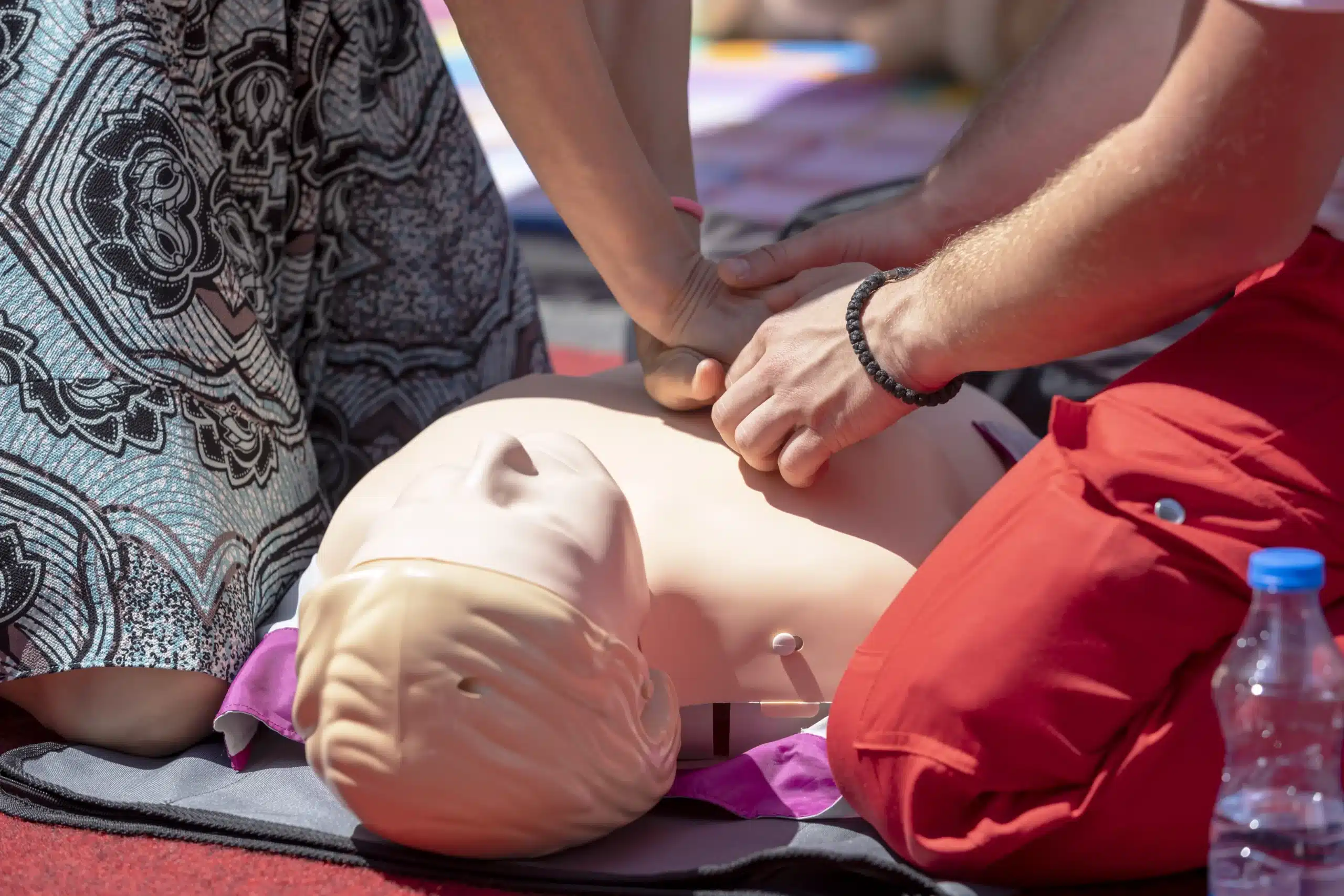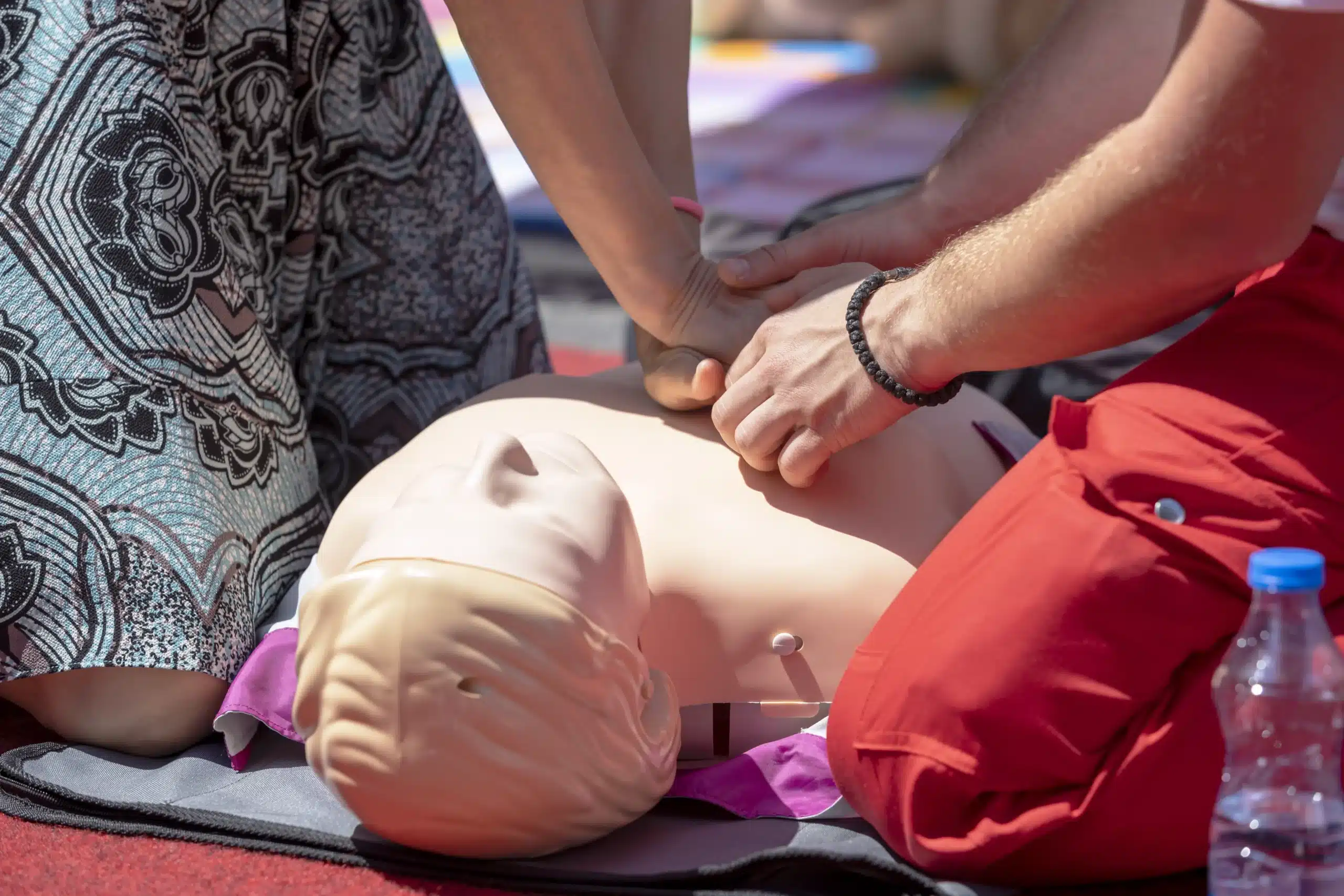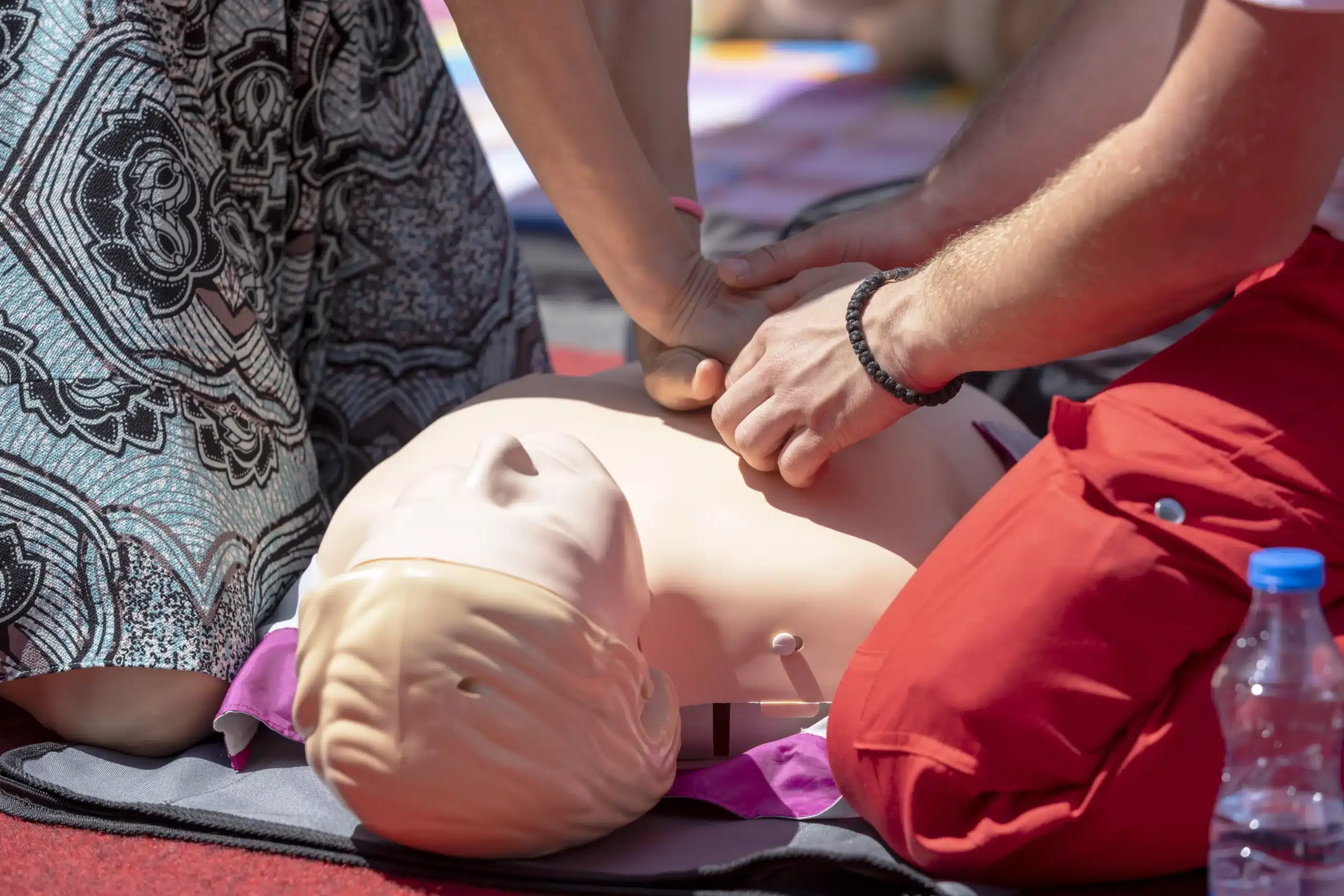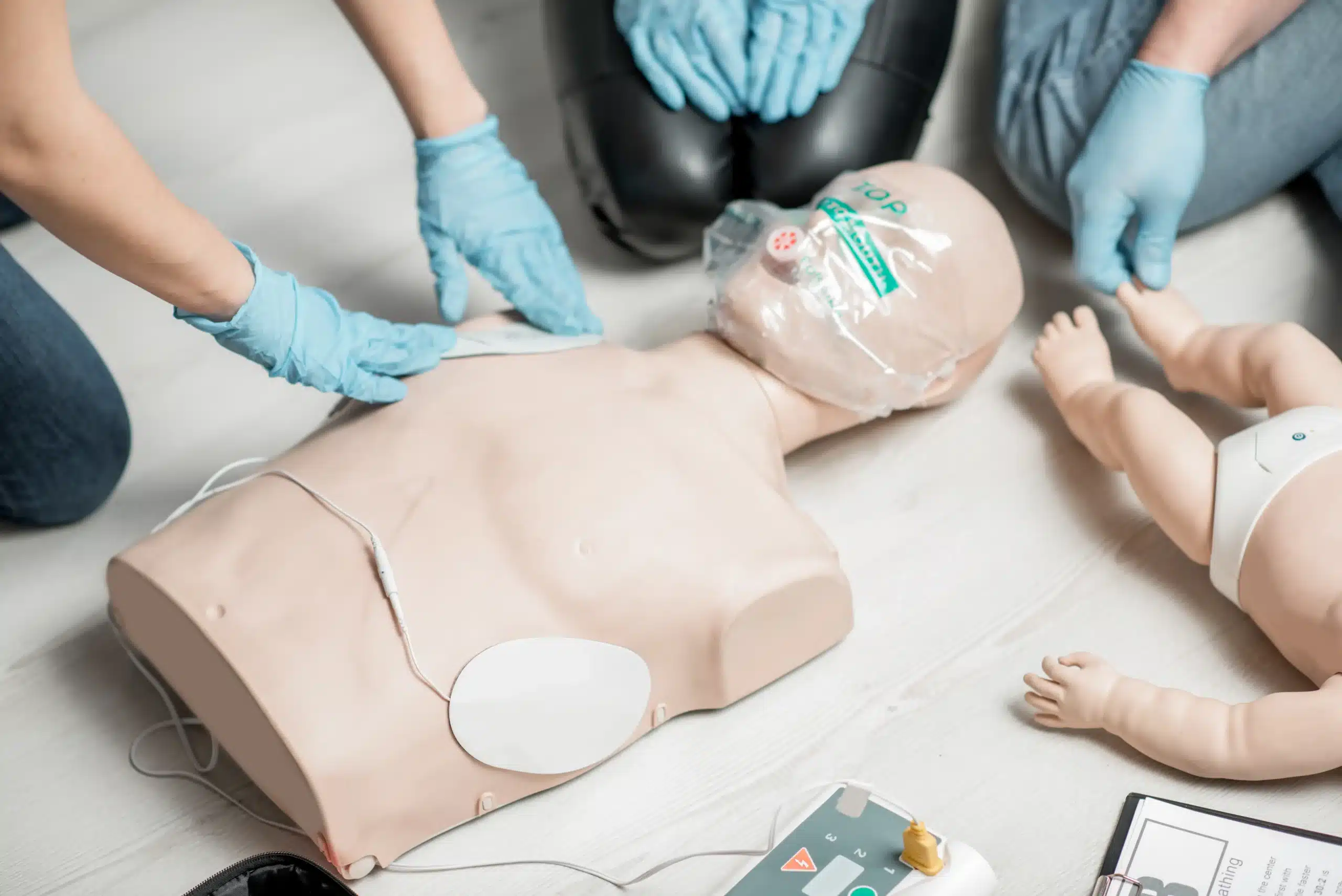Emergencies can happen anytime, anywhere. Knowing how to respond effectively can make all the difference. CPR certification equips you with the skills and confidence to provide immediate assistance when every second counts. If you’ve been typing “CPR certification near me” into a search engine, this guide is for you. We’ll explore the various types of CPR training available, the costs and time commitment involved, and how to find reputable CPR certification providers in your area. We’ll also address common misconceptions about CPR training and provide additional resources to support your learning journey.
Key Takeaways
- CPR certification empowers you to save lives: Learn essential skills to respond to emergencies through convenient online, in-person, or blended learning courses.
- Select the right CPR course for your needs: Consider accreditation, instructor experience, and course content when choosing a program. Explore options from established providers like the American Heart Association, American Red Cross, and local providers like Safety Training Seminars.
- Stay prepared by maintaining your CPR skills: Refresh your knowledge and technique through recertification courses and readily available online resources. Consistent practice ensures you’re always ready to respond effectively.
What is CPR Certification?
CPR certification means you’ve successfully completed a course and demonstrated the skills to perform cardiopulmonary resuscitation (CPR). It’s proof that you know how to respond to cardiac arrest and other emergencies where someone’s breathing or heartbeat has stopped. This section covers CPR basics and who benefits from certification.
What is CPR and Why is it Important?
CPR (Cardiopulmonary Resuscitation) combines chest compressions and rescue breaths. These techniques maintain blood flow and oxygen to vital organs when someone’s heartbeat or breathing has stopped. Cardiac arrest, heart attacks, choking, and near-drowning incidents can happen at any time. Knowing CPR can significantly increase the chances of survival. It allows you to provide immediate assistance while waiting for professional medical help.
Who Needs CPR Certification?
CPR certification is valuable for many people. It’s essential for healthcare providers, teachers, coaches, and anyone who might find themselves responding to emergencies. Parents, babysitters, and other caregivers also benefit from having this lifesaving training. Many employers require CPR certification, especially in healthcare, education, and childcare. Even if it’s not a job requirement, getting certified shows you’re committed to safety and preparedness, a valuable asset in any field. If you’re looking to improve your skills for personal knowledge or community service, consider pursuing CPR certification. It prepares you to make a real difference in a critical situation.
CPR Certification Courses
Choosing the right CPR certification course depends on your learning style, schedule, and budget. Let’s explore the different types of CPR training available.
In-Person CPR Classes
In-person CPR classes offer hands-on learning and direct interaction with a certified instructor. This format allows for immediate feedback, ensuring you develop proper CPR skills and confidence. Many students appreciate the supportive learning environment created by face-to-face instruction and the chance to practice with others. If you thrive in a traditional classroom and learn best through hands-on practice, in-person CPR training might suit you best. Look for classes offered by reputable organizations like the American Heart Association.
Online CPR Courses
Online CPR courses offer flexibility and convenience, allowing you to learn at your own pace. This format often involves video demonstrations, interactive exercises, and online assessments. Online courses can be a great option for busy schedules or limited access to training centers. However, online CPR certification may not meet all workplace or licensing requirements. Always check with your employer or regulatory body to confirm acceptance. HLFirstAid offers a helpful perspective on online CPR certifications.
Blended Learning CPR
Blended learning CPR courses combine online learning and in-person skills practice. You’ll typically complete the theoretical part online, followed by a hands-on session with an instructor. This lets you learn at your own speed and demonstrate your skills in person. Blended learning offers a balance of flexibility and practical application. CPRCertified.com provides a guide for choosing the right CPR program. Remember to consider accreditation, instructor qualifications, and the training company’s reputation when selecting any CPR training.
Top CPR Certification Providers Near Modesto
Finding the right CPR certification provider is key to receiving high-quality training. Here are some reputable organizations offering CPR certification near Modesto:
American Heart Association (AHA)
The American Heart Association sets the standard for resuscitation guidelines. Their courses are widely recognized, especially within the healthcare community. AHA certifications are often preferred by healthcare professionals and those seeking jobs in healthcare settings. AHA courses cover essential life-saving skills, equipping individuals with the knowledge and confidence to respond effectively in medical emergencies.
American Red Cross
The American Red Cross is another well-known provider of CPR training. Their comprehensive courses cover a range of emergency situations. Red Cross certifications are widely accepted and suitable for various professions and personal enrichment. They offer both in-person and online options for different learning styles. Red Cross certifications are generally valid for two years.
Safety Training Seminars
Safety Training Seminars offers various CPR and first-aid courses in Modesto, focusing on affordable and convenient training for individuals and groups. As an American Heart Association Training Center, their CPR courses align with the latest AHA guidelines. They offer BLS, ACLS, and PALS certifications, along with discount group classes. They serve Modesto, Turlock, and Manteca, CA, and offer courses in over 60 cities with a low-price guarantee.
National Safety Council (NSC)
The National Safety Council is a trusted source for safety training, including CPR certification. NSC courses meet the latest industry standards, preparing individuals for various emergency scenarios. They offer courses for both individuals and organizations.
ProTrainings
ProTrainings offers online CPR certification courses for flexibility and convenience. Their online format allows participants to learn at their own pace and from anywhere. ProTrainings certifications meet OSHA and other regulatory standards.
American Safety & Health Institute (ASHI)
The American Safety & Health Institute provides various CPR and first-aid training programs known for their quality. ASHI courses cater to diverse audiences, from healthcare professionals to the general public, offering several certification options.
CPR Certification: Cost and Duration
CPR certification is an investment in your skills and ability to help in a medical emergency. Understanding the costs, time commitment, and how long your certification is valid is key to choosing the right course for you. Let’s break down these factors:
Average Cost and Factors
The cost of CPR certification varies depending on several factors. The type of course you choose plays a big role—basic CPR certification typically costs somewhere between $50 and $150. More comprehensive courses, like those that include first aid training, usually range from $75 to $200. Advanced certifications, such as ACLS or PALS, can cost more than $200. Your location can also influence pricing, as can whether you opt for online or in-person training. These costs generally cover your training materials, instructor fees, and the certification exam fee. For the best value, check out our low price guarantee. If you have a group that needs certification, ask about our group discounts.
Course Length and Time Commitment
Most CPR courses are designed to be completed in a single session, typically lasting between two and six hours. A basic CPR class often takes about four hours to complete, while a more comprehensive course, including first aid, could take up to six hours. The time commitment depends on the depth of the course material and the number of skills taught.
Certification Validity
CPR certifications are typically valid for one to two years. After this period, you’ll need to get recertified to keep your skills and knowledge current, ensuring you’re always prepared to respond effectively in an emergency. Some organizations may also offer continuing education credits with their certification programs.
What to Expect in a CPR Course
So, you’ve decided to get CPR certified—great! Whether you’re pursuing this for your job, personal enrichment, or peace of mind, knowing what to expect can make the process smoother and more rewarding. CPR courses blend theory and practical skills, so come prepared to learn and actively participate.
Course Content
CPR courses cover essential lifesaving skills. You’ll learn adult, child, and infant CPR, how to use an automated external defibrillator (AED), and basic first aid. Many courses, including those we offer at Safety Training Seminars, follow American Heart Association (AHA) or American Red Cross guidelines, ensuring your training aligns with nationally recognized standards. Be sure to choose a course that covers the specific skills you need, whether that’s basic CPR or more advanced training like Basic Life Support (BLS). For example, healthcare providers often require ACLS (Advanced Cardiovascular Life Support) or PALS (Pediatric Advanced Life Support) certification.
Hands-on Practice
CPR is a hands-on skill, and a significant portion of your course will involve practicing on mannequins. This allows you to develop muscle memory and gain confidence in performing compressions and rescue breaths. Experienced instructors will guide you through the process, offering personalized feedback and support. This hands-on training is invaluable, as it bridges the gap between theory and real-world application. At Safety Training Seminars, we emphasize this practical training to ensure our students feel prepared for real-life emergencies. We also offer group discounts to make training more accessible.
Assessment Methods
Most CPR courses include a skills test to ensure you’ve mastered the techniques. This typically involves demonstrating CPR and AED use on a mannequin in front of an instructor. Some courses also have a written exam covering the theoretical concepts discussed during the training. Don’t worry, the goal isn’t to make you feel stressed—it’s to verify you can confidently and effectively perform CPR in an emergency. We maintain a low price guarantee, so you can get high-quality training without breaking the bank.
Choose the Right CPR Course
Finding the right CPR course involves understanding your needs, comparing available options, and verifying the provider’s accreditation. Let’s break down each step.
Assess Your Needs
Before searching for “CPR certification near me,” think about why you need this training. Are you pursuing a healthcare career, fulfilling a job requirement, or simply want to be prepared for emergencies? Your reason will influence the type of course you need. For example, healthcare providers often require BLS certification, while a basic CPR and first aid course might suit community members. Also, consider your learning style. Do you prefer in-person instruction or the flexibility of online learning? Knowing your needs will help you narrow your search.
Compare Courses
Once you know the type of course you’re looking for, compare options. Look at factors like course content, cost, and schedule. Prices can range from around $50 for basic CPR to over $200 for more advanced certifications like ACLS or PALS. If cost is a concern, see if the training center offers discounts for group classes or has a low-price guarantee. Also, consider the course duration and how it fits your schedule. Some courses can be completed in a single day, while others might require multiple sessions.
Verify Accreditation
Choosing a CPR course from a recognized provider is crucial. Look for organizations accredited by the American Heart Association (AHA) or the American Red Cross. Accreditation ensures the course meets established standards and is widely accepted. Don’t hesitate to ask potential providers about their accreditation and instructor qualifications. A reputable training company will also offer support after the course, like refresher materials or recertification options, so you can maintain your skills.
Renew Your CPR Certification
CPR skills are perishable. Regularly refreshing your knowledge and technique is essential to confidently and effectively respond to emergencies. This section covers everything you need to know about renewing your CPR certification.
Recertification Frequency
CPR certifications are typically valid for two years, though some courses may have shorter or longer terms. It’s crucial to keep track of your certification’s expiration date and plan for renewal accordingly. You can find more information on CPR certification validity at the CPR Certification Center. Knowing when your certification expires helps you stay current with the latest guidelines and maintain your skills. Some certifications, depending on the course level, may only be valid for one year, so double-check your specific credentials. For a comparison of different CPR certification programs, see this helpful resource on AHA vs. Red Cross certification.
Renew Your Certification
Renewing your CPR certification is straightforward. Many training providers offer recertification courses, often streamlined versions of the initial certification. Look for a training company that offers comprehensive post-training support, including refresher courses and access to updated resources. Some providers, like CPR Select, offer convenient online renewal options, allowing you to complete the coursework at your own pace. This flexibility makes it easier to fit recertification into your busy schedule. Consider checking with your local training center for available renewal courses.
Maintain Your Skills
Maintaining your CPR skills between recertifications is key to staying prepared. Practice scenarios with friends or family, visualize emergency responses, and stay updated on any changes to CPR guidelines. The guidance of experienced instructors is invaluable, not just during the initial training, but for ongoing skill development, too. Learn more about the importance of qualified instructors from this article on choosing the right CPR training. Remember, consistent practice and a commitment to staying informed are crucial for providing effective CPR in real-life situations. For those interested in mobile CPR certification programs, it’s important to ensure the program’s legitimacy and alignment with recognized standards. This article on mobile CPR certifications offers valuable insights for making informed decisions about your training.
Find CPR Certification Near You
So, you’re ready to learn CPR? Great! Finding the right class shouldn’t be a headache. Here’s how to find a CPR certification course near you:
Use Online Search Tools
Start with a simple online search. Type “CPR certification near me” or “CPR classes in [your city]” into your favorite search engine. This will pull up local businesses and organizations offering CPR training. Many organizations, like the American Heart Association, also have website search tools allowing you to filter by location and the type of CPR class you need. Just make sure any certification you choose is accepted by employers if required for your job.
Local CPR Training Resources
Your local fire departments, hospitals, or community centers often offer CPR classes. Check their websites or give them a call to see what’s available. Established organizations like the American Heart Association and the American Red Cross are also excellent resources for CPR certification courses. You can usually find class schedules and registration information right on their sites. Don’t forget to check with smaller, local businesses like Safety Training Seminars—they often offer competitive pricing and flexible schedules for CPR, First Aid, and other certification courses. Safety Training Seminars offers the BLS course, ACLS course, and PALS course from the American Heart Association. You can find discount group classes as well as a low price guarantee.
Questions to Ask Providers
Before you sign up for any CPR class, it’s smart to ask a few questions. Inquire about the instructor’s qualifications and experience teaching CPR. Ask about the course content—does it cover adult, child, and infant CPR? What about AED training? Also, check if the organization or business is accredited and if their certification is widely recognized. Finally, reading online reviews can give you a good sense of other students’ experiences. Choosing the right CPR training provider ensures you receive quality training that meets industry standards.
Common CPR Certification Misconceptions
It’s easy to get confused about CPR certifications, especially with so much information (and misinformation) online. Let’s clear up some common misconceptions so you can make informed decisions about your training.
Online vs. In-Person Training
One of the biggest misunderstandings about CPR training is the validity of online-only certifications. While convenient, online CPR courses may not meet requirements for many jobs, especially in healthcare. Many states mandate in-person training, regardless of any online components. As Healthline First Aid points out, “online CPR certifications may not meet all legal and professional requirements, especially in regulated fields like healthcare.” So before you sign up for an online-only course, double-check the requirements for your profession. Completely online CPR certifications are often invalid—and a waste of your money.
Certification Duration
CPR guidelines and best practices change periodically. That’s why certifications expire, and you need to recertify. How often you renew your CPR certification depends on the issuing organization. For example, certifications from the American Heart Association (AHA) are typically valid for two years, while some Red Cross certifications last for one or two years, depending on the specific course. Keep track of your expiration dates to ensure your skills are current and you meet all requirements. For more information on AHA vs. Red Cross certifications, visit this helpful comparison.
Who Needs CPR Training?
CPR training isn’t just for doctors and nurses. While it’s definitely essential for healthcare professionals, CPR and first aid knowledge benefits everyone. Anyone can find themselves in a situation where these skills are needed. The University of Southern Mississippi explains that these courses are valuable “for those needing certification for work, designated emergency responders, or anyone wanting to be prepared for emergencies.” Think about taking a CPR class if you’re a teacher, coach, childcare provider, or simply want to be prepared to help in a crisis. Knowing CPR can empower you to save a life.
Additional CPR Resources and Support
Earning your CPR certification is a great accomplishment, but staying up-to-date on the latest guidelines and techniques is essential for providing effective care in an emergency. This section covers resources to help you maintain and enhance your skills.
Refresher Courses and Skill Maintenance
CPR skills can fade over time, so regular practice is key. A good training company will offer refresher courses and recertification options to help you stay sharp. These supplemental courses reinforce your knowledge and provide hands-on practice to maintain proficiency in life-saving techniques. Look for providers, like Safety Training Seminars, who offer continuing support and resources to keep your skills current. We also recommend checking for a low price guarantee when choosing a provider.
Online Learning Materials and Guides
Many organizations offer valuable online resources to supplement in-person training. The American Heart Association provides FAQs, support resources, and information on ECC courses and products. These materials offer a convenient way to refresh your knowledge and stay informed about the latest CPR techniques and guidelines between refresher courses. Regularly reviewing these resources can boost your confidence and ensure you’re prepared for any emergency. You can also explore resources related to specific certifications, such as BLS, ACLS, and PALS.
Community Support Groups
Connecting with others interested in CPR can be a great way to enhance your learning experience. Community support groups offer a platform to share experiences, ask questions, and receive guidance on CPR practices. These groups can provide valuable insights and support as you continue your CPR journey. Consider searching online for local CPR communities or checking with your training provider for recommendations.
Related Articles
- Why CPR is Vital for Saving Lives
- CPR Certification in Modesto: Your Complete Guide – Modesto CPR Classes
- CPR Renewal in Modesto: Find Classes & Get Certified – Modesto CPR Classes
- Debunking Common CPR Myths for Effective Response
- CPR Training in Modesto: Your Complete Guide – Modesto CPR Classes
Frequently Asked Questions
How do I choose between online and in-person CPR training? Think about your learning style and schedule. In-person classes provide hands-on practice and immediate feedback from an instructor. Online courses offer flexibility, but may not meet all workplace requirements, so check with your employer or licensing board. Some professions require in-person training.
What does CPR certification cost, and how long does it last? CPR certification costs vary based on the course type, location, and training provider. Basic CPR classes typically range from $50 to $150. More advanced courses, like ACLS or PALS, can cost more. Most certifications are valid for one to two years, after which you’ll need to recertify.
What topics are covered in a typical CPR course? CPR courses typically cover adult, child, and infant CPR techniques, how to use an automated external defibrillator (AED), and basic first aid. More advanced courses may cover topics like airway management and rescue breathing techniques.
Where can I find CPR training near me? Use online search engines, check with your local fire department, hospitals, community centers, or contact established organizations like the American Heart Association or American Red Cross. Also, consider local businesses that offer CPR training, as they often have competitive pricing and flexible schedules.
How can I maintain my CPR skills after becoming certified? Practice regularly, consider refresher courses, and stay updated on the latest CPR guidelines. Many organizations offer online resources and support materials to help you maintain your skills and knowledge. Connecting with other CPR-certified individuals in your community can also provide valuable support and continued learning opportunities.
